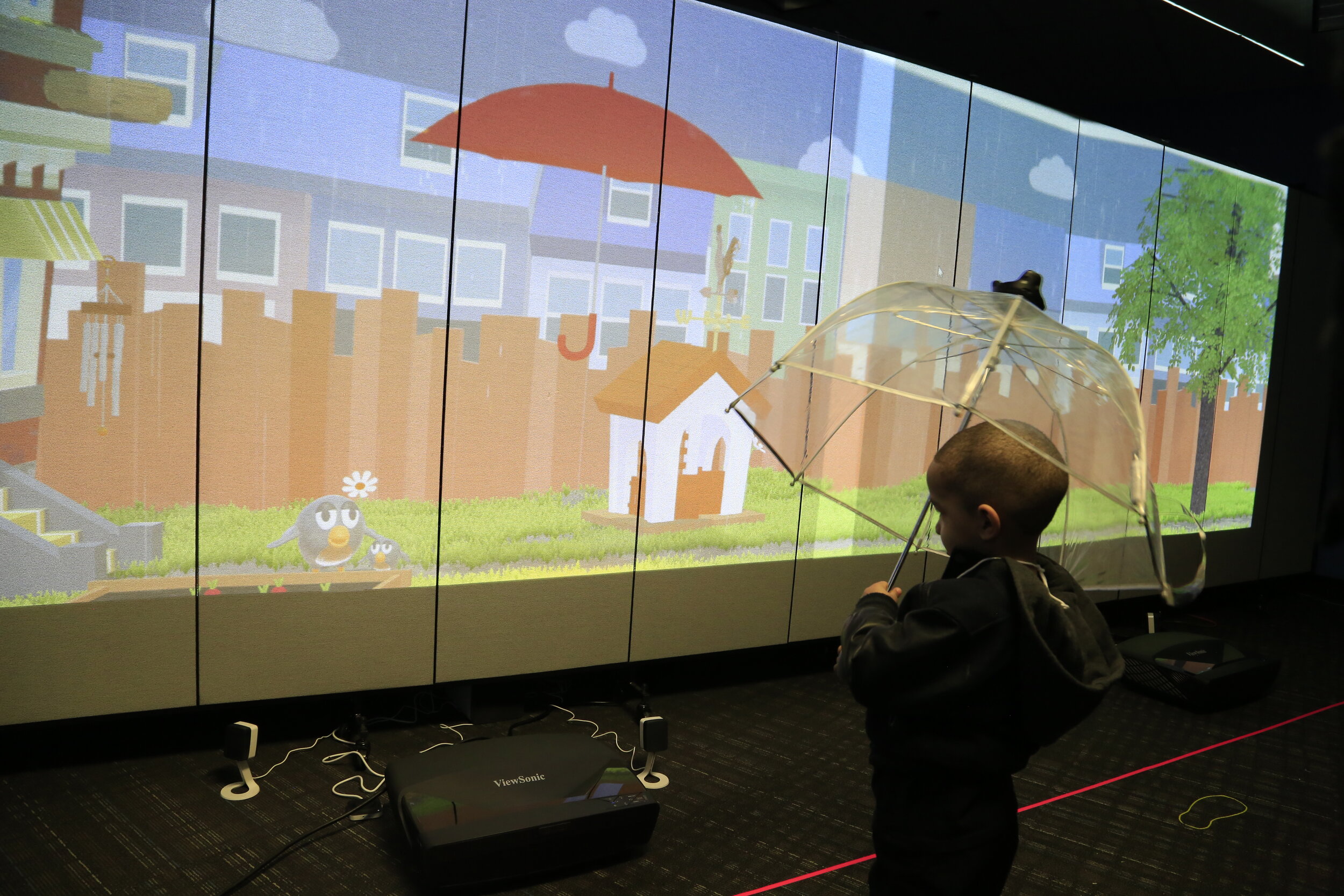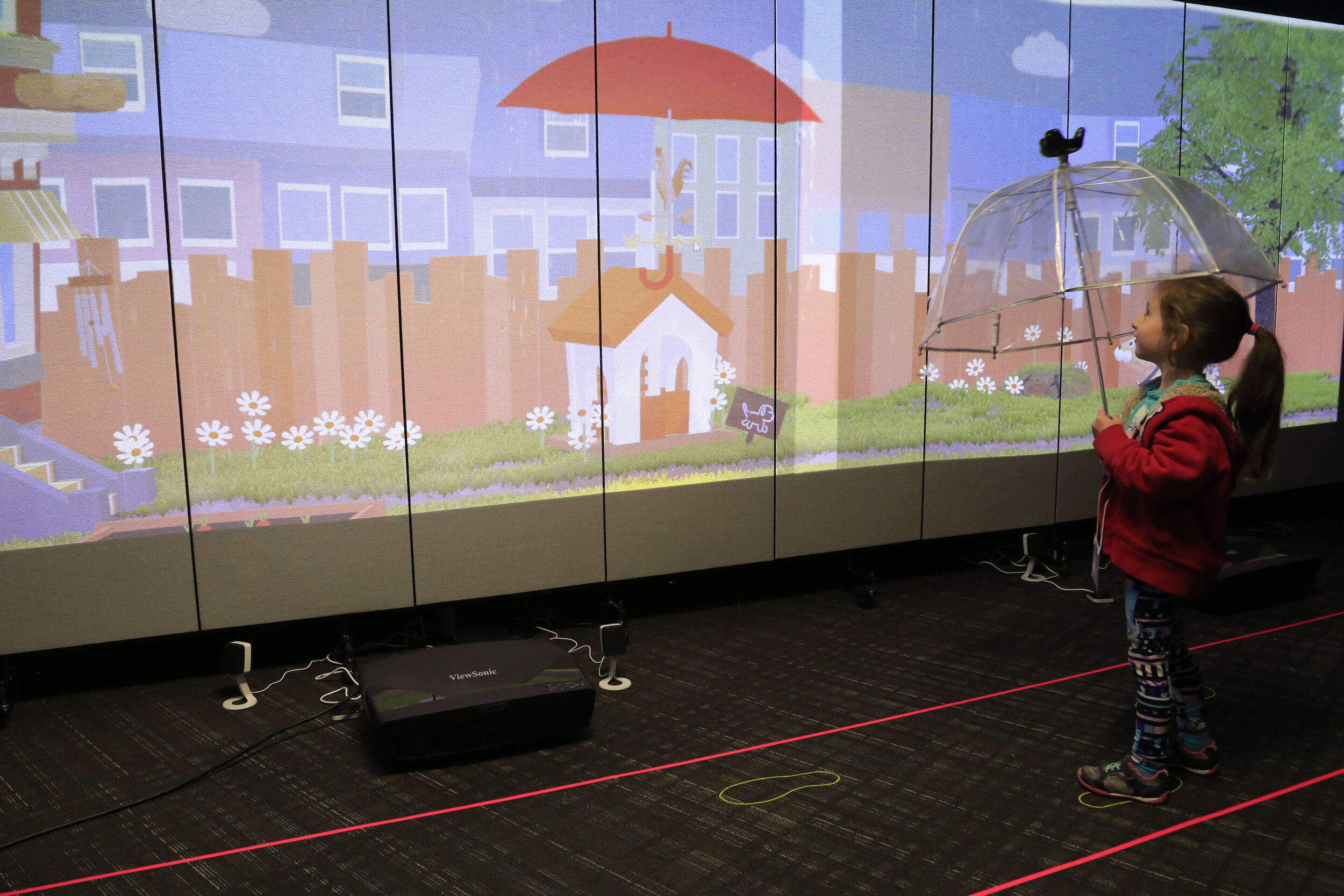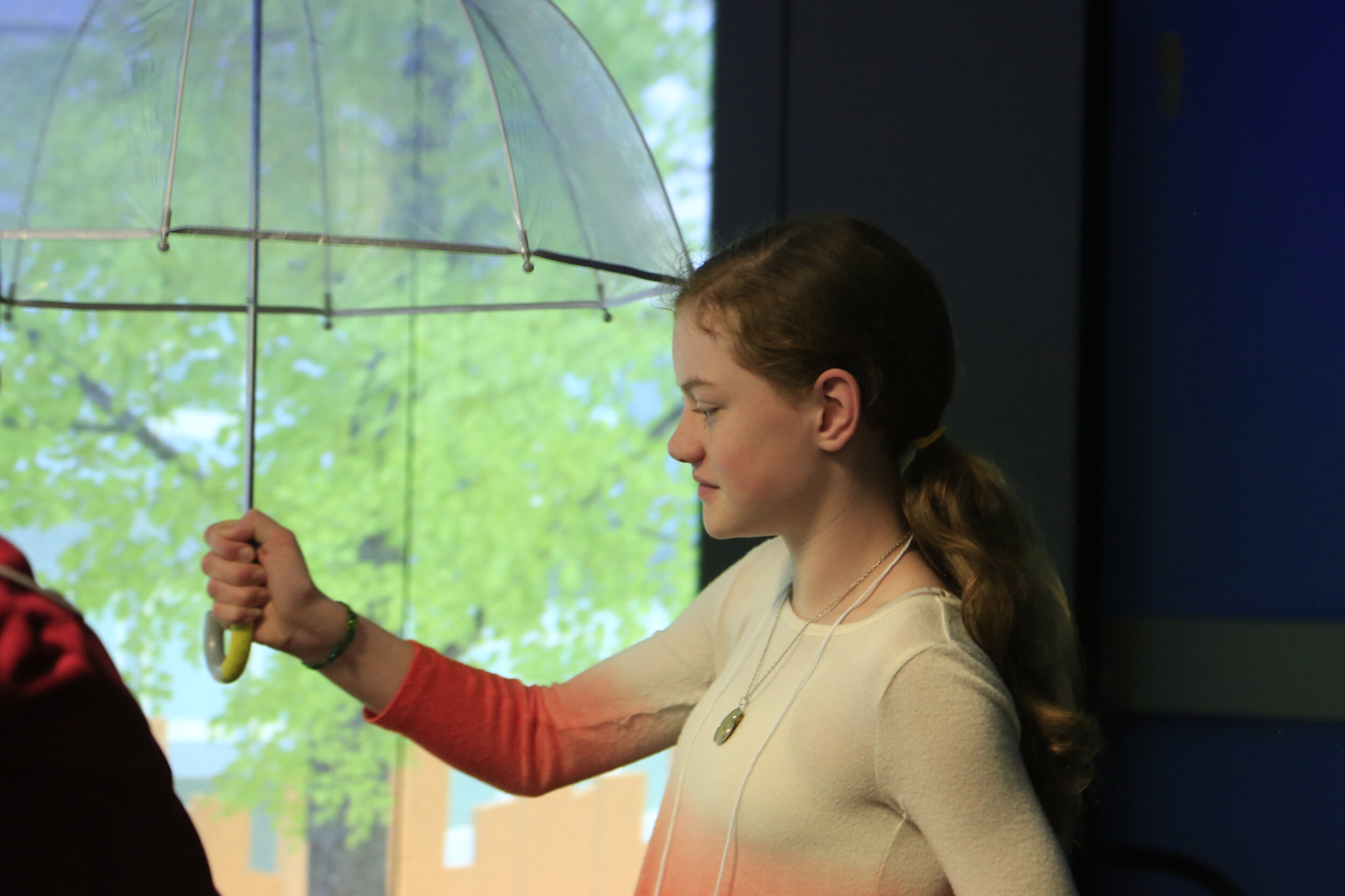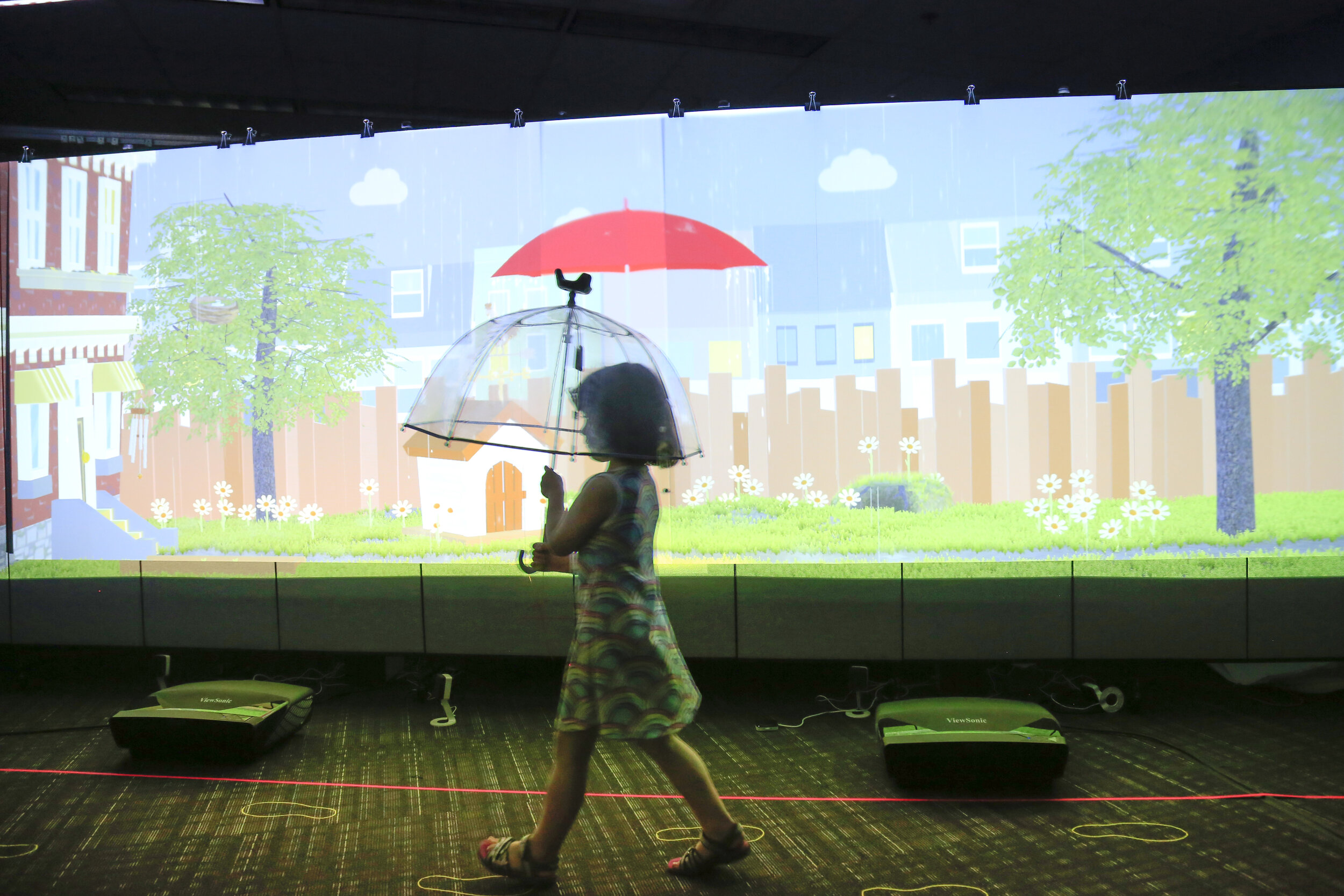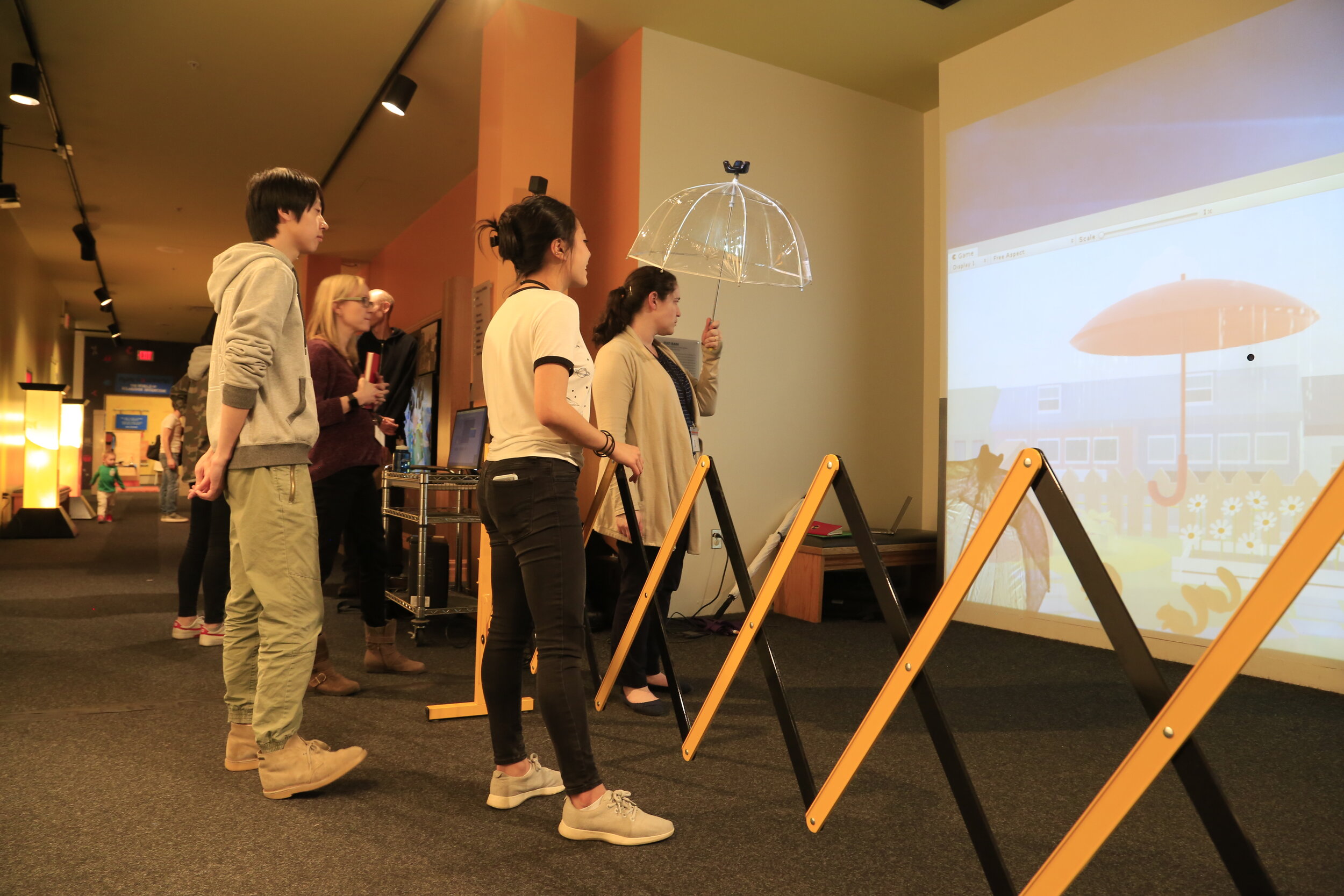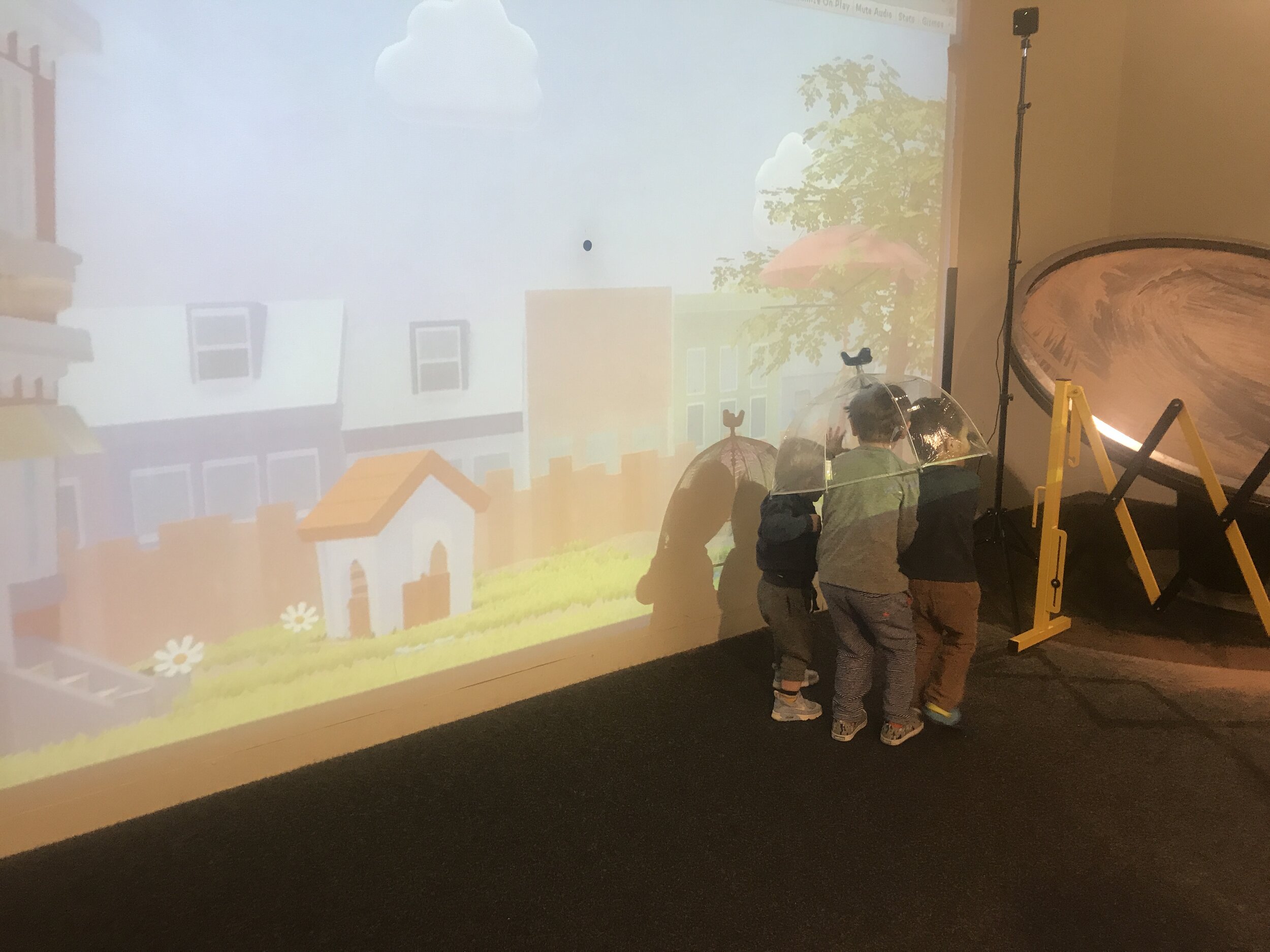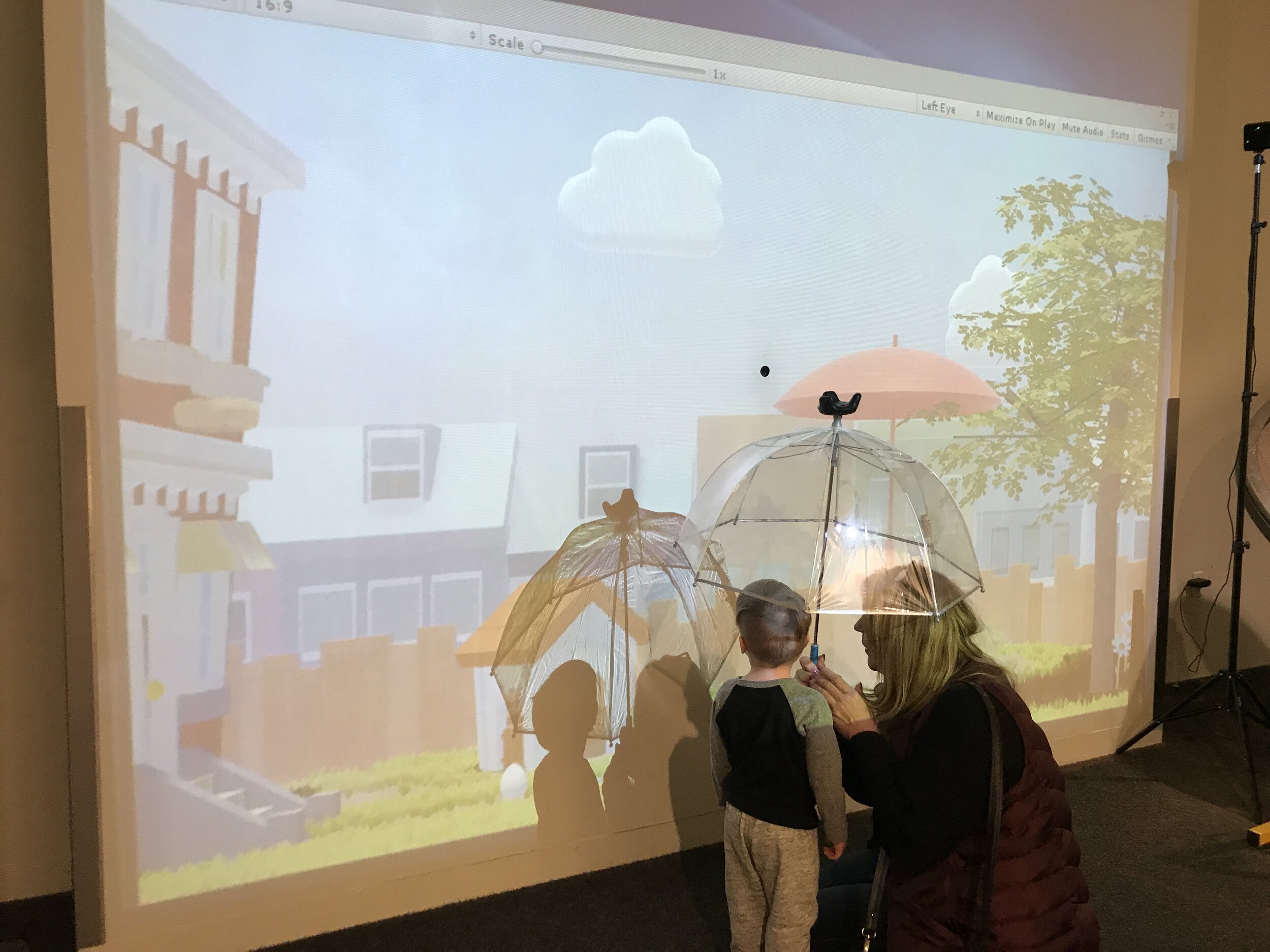One Small Act
Client: Children’s Museum of Pittsburgh + Entertainment Technology Center
Goal: Develop an interactive experience to practice kindness.
Demographic: 3-5 year old children, with a focus on child and caregiver interactions.
Team: Daryl Choa (Experience Designer), Min Pan (Artist), Dustin Stephan (Producer), Weidi Tang (Programmer), and Jinyi Ye (Artist).
Platform: HTC Vive tracking system for playtesting, rotary encoder and Arduino board for final installation, and short-throw projectors for media.
Project Summary: Children’s Museum of Pittsburgh (CMP) is currently engaged in a museum-wide initiative to support community engagement in kindness as a learning process. As the next step in this initiative, CMP is transforming its existing Attic exhibit into a new 1,200 sq. ft. gallery dedicated to exploring the concept of kindness. Together with the Design Department and the Learning & Research Department, we developed an experience for this space using the “real stuff” of today’s play. We delivered a high fidelity prototype that translates the concept of kindness into an experience that resonates with children and caregivers of all ages.
Our concept was a non-competitive play experience in mixed reality, for children ages 3-8. In this concept, the guest(s) control a giant physical umbrella prop attached to a linear track. A rainy day scene is video mapped onto the back wall. The physical umbrella is mapped one to one to a digital umbrella in the scene, and is tracked via a rotary encoder. Characters appear in the scene, and guests must work independently or together to move the umbrella to shelter characters from the rain and bring them back to their homes. The experience is non-linear, with rainy day to sunny day cycles on a loop.
Contributions
Developed original pitch concepts
Conducted behavioral research and lead museum observations
Designed user experience and narrative flow
Modeled and animated 3D assets
Organized, planned, and conducted seven playtests with over 300 children
Created presentation materials
Challenges
Communication within the team.
As we were from different cultural backgrounds, we had different expectations when it came to participation in meetings and prioritization of tasks.
Cutting-Edge + Robust.
Our clients challenged us to create an experience that used “cutting-edge” technology in a timeless way. As the project was for a museum setting, we had to also factor in robustness.
Throughput.
Given that the experience was about kindness, we had to make sure that guests would take turns and share.
Client vs Faculty.
Faculty did not always agree with our design choices that were supported by the client.
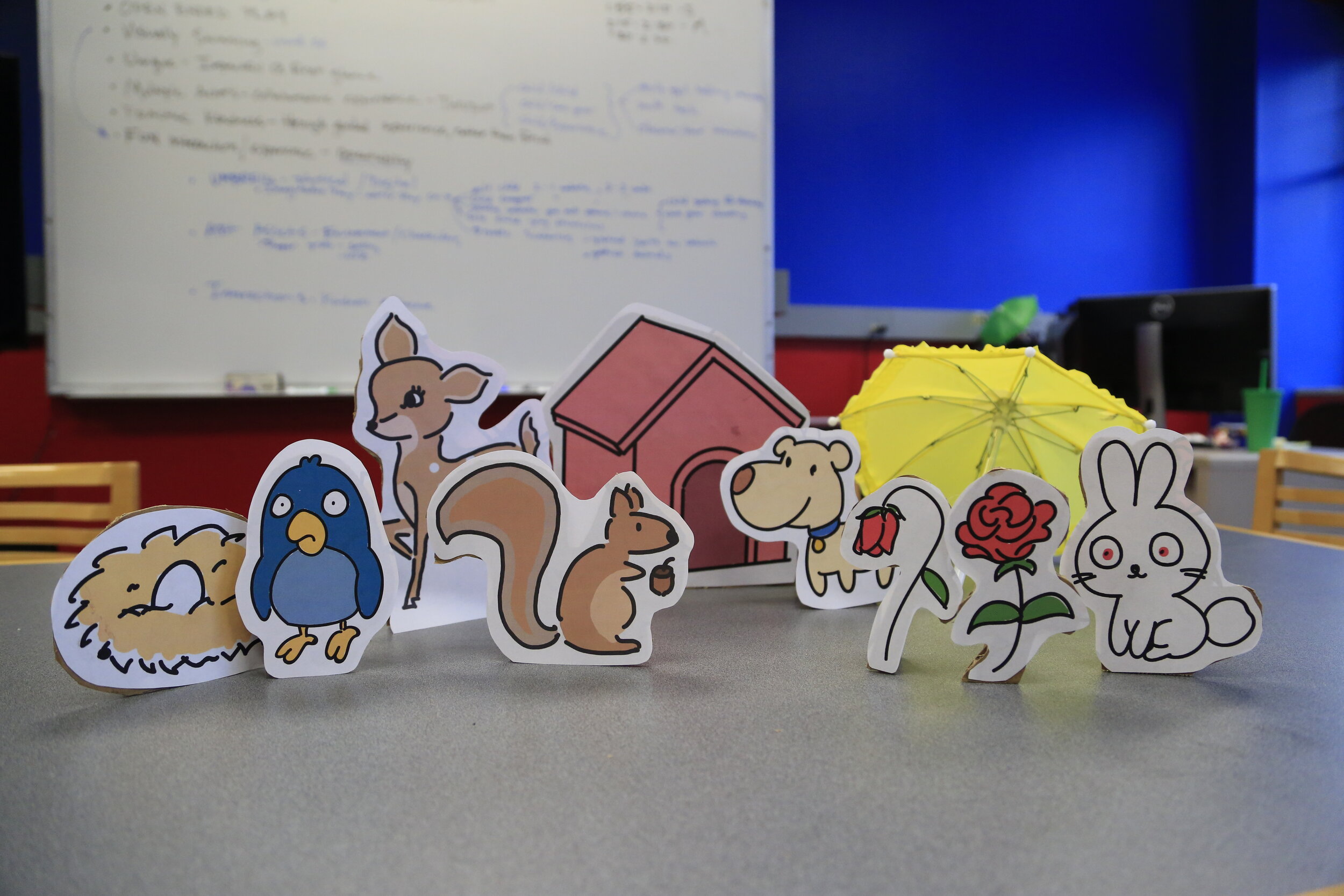
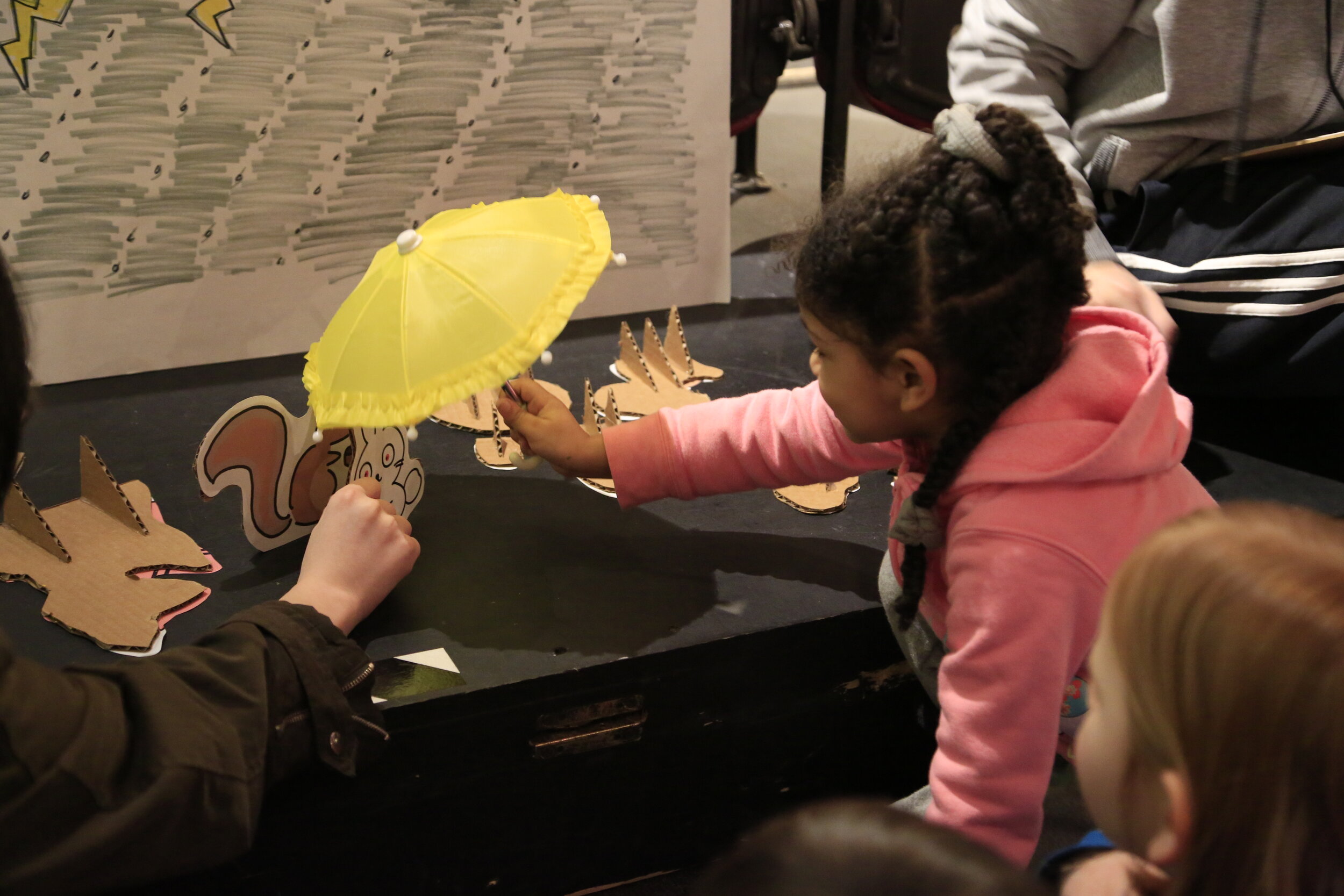

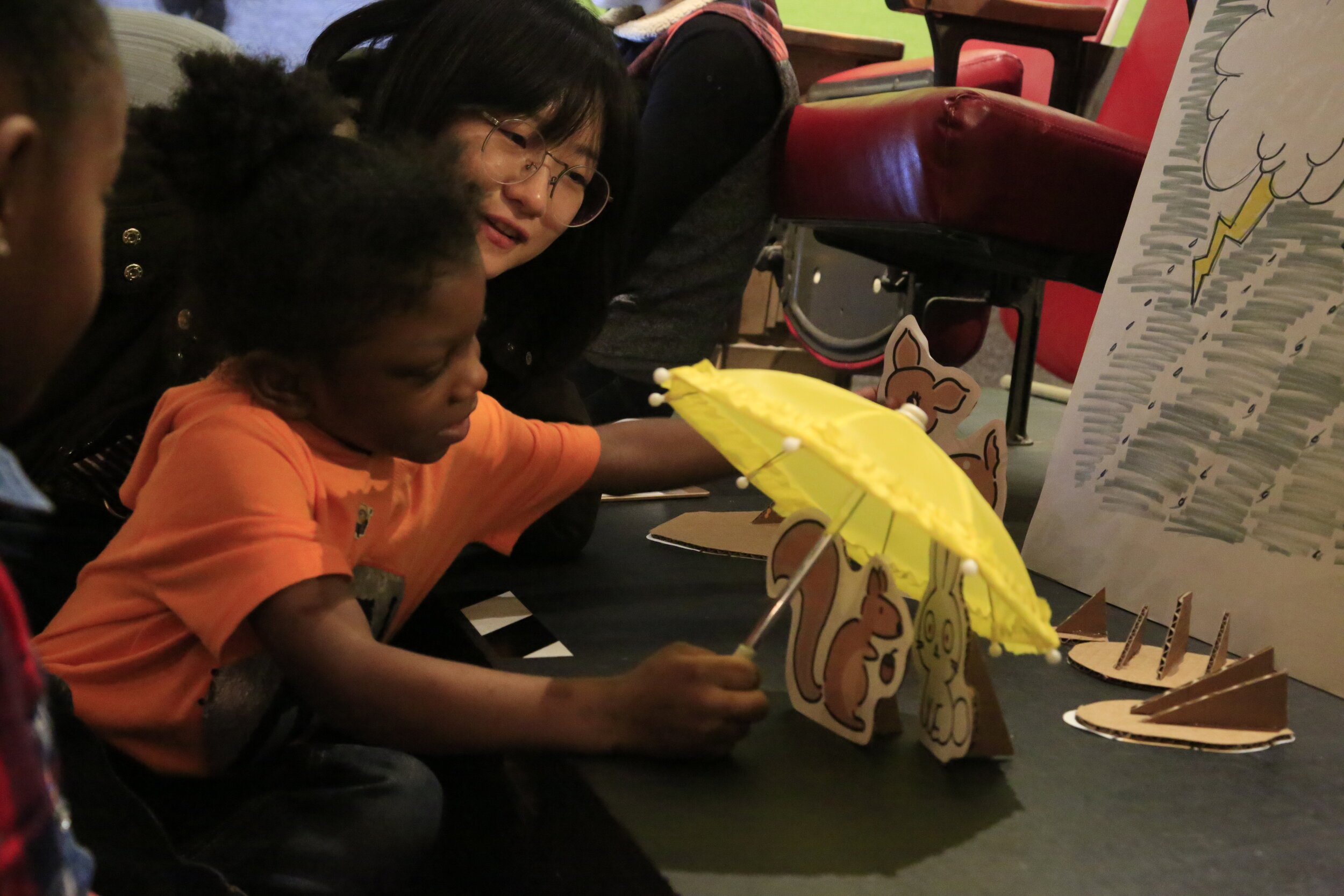
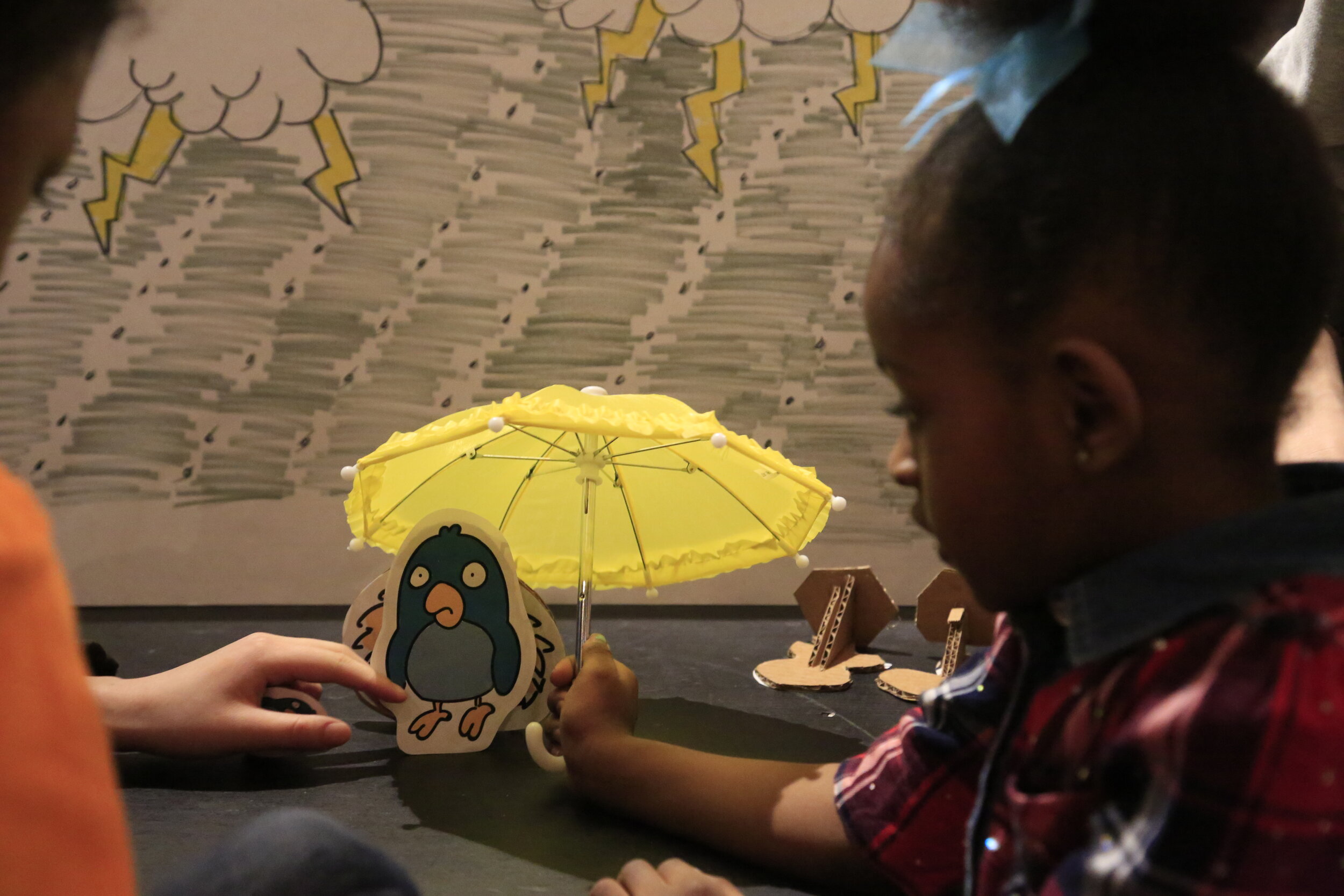
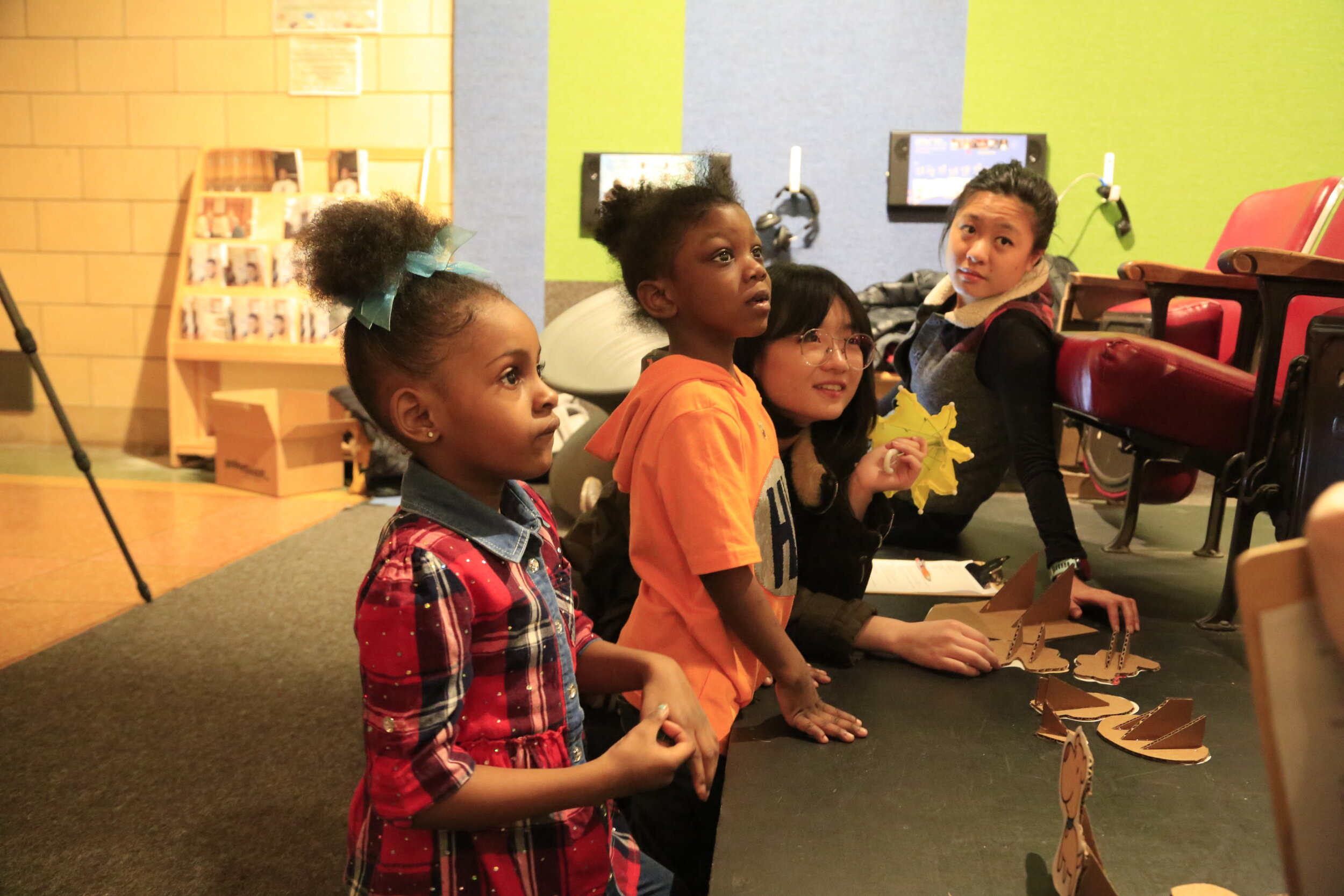
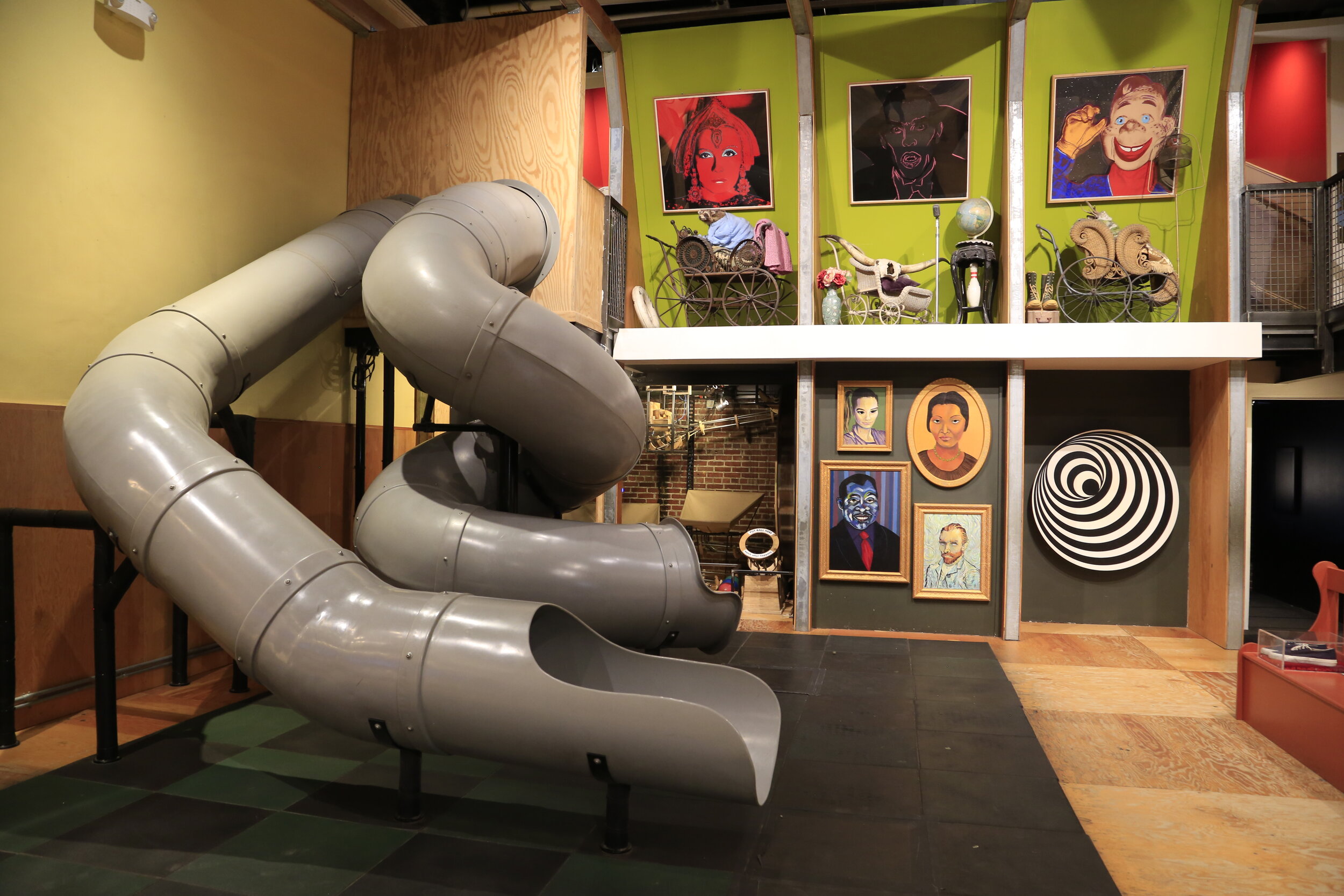

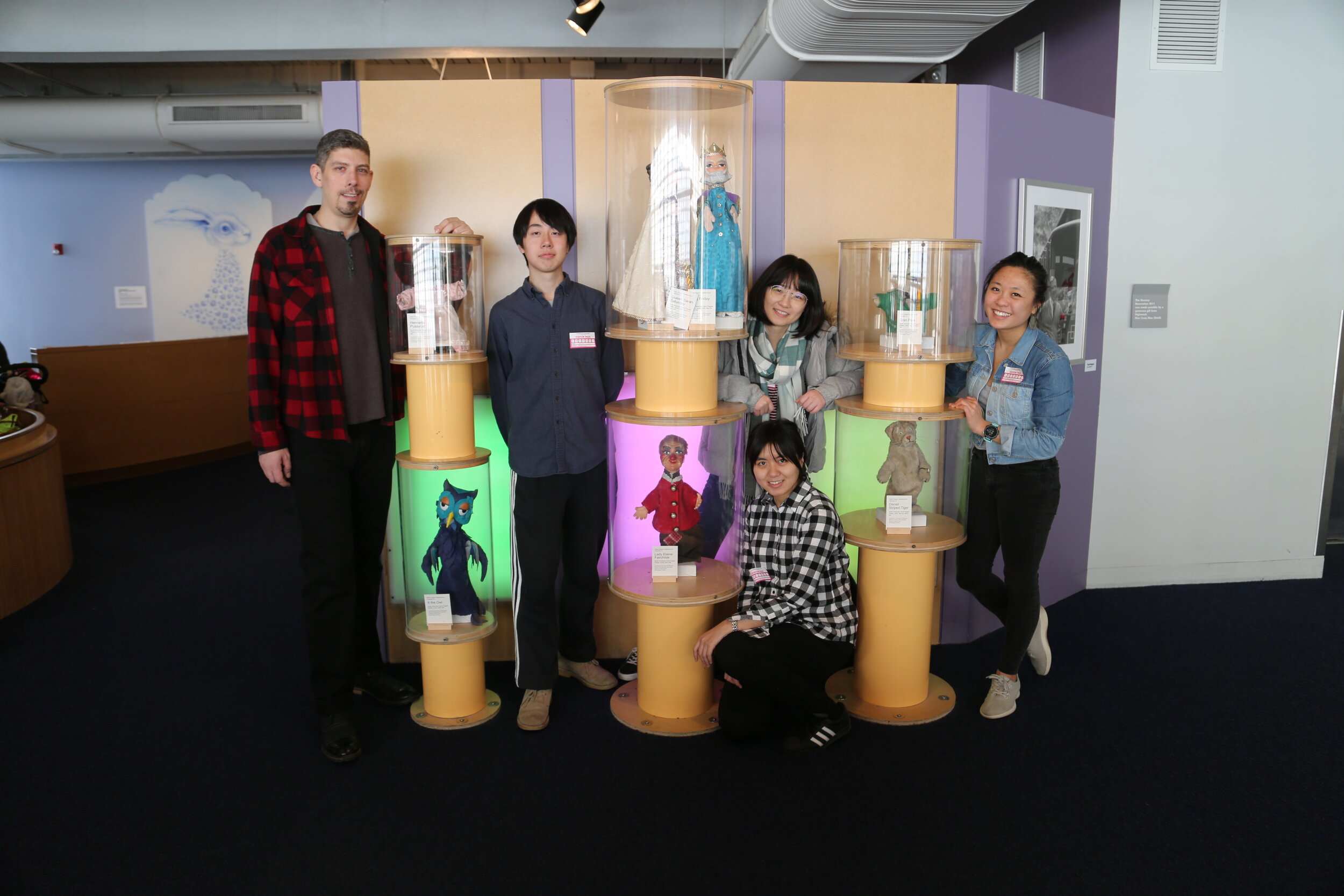
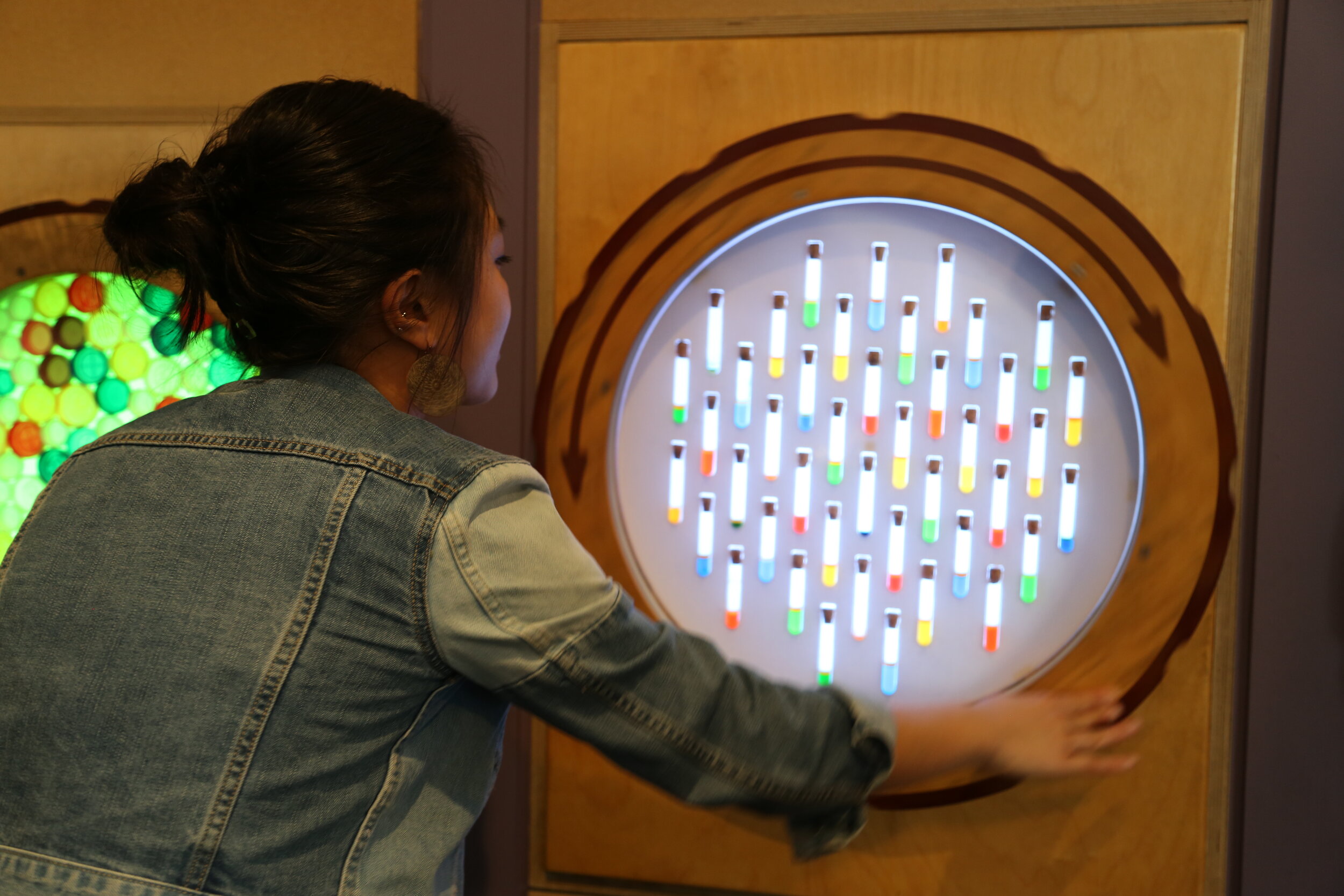
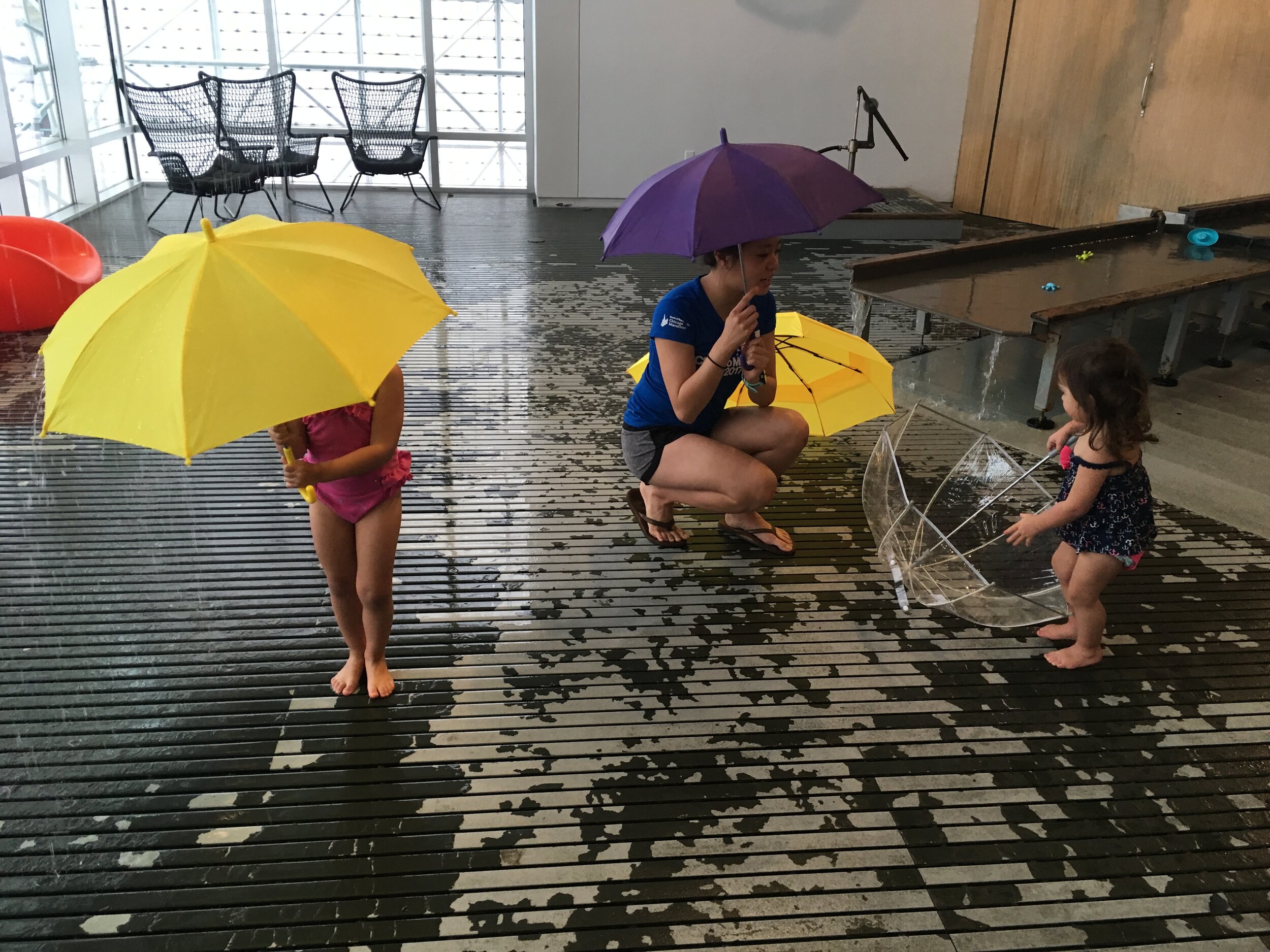
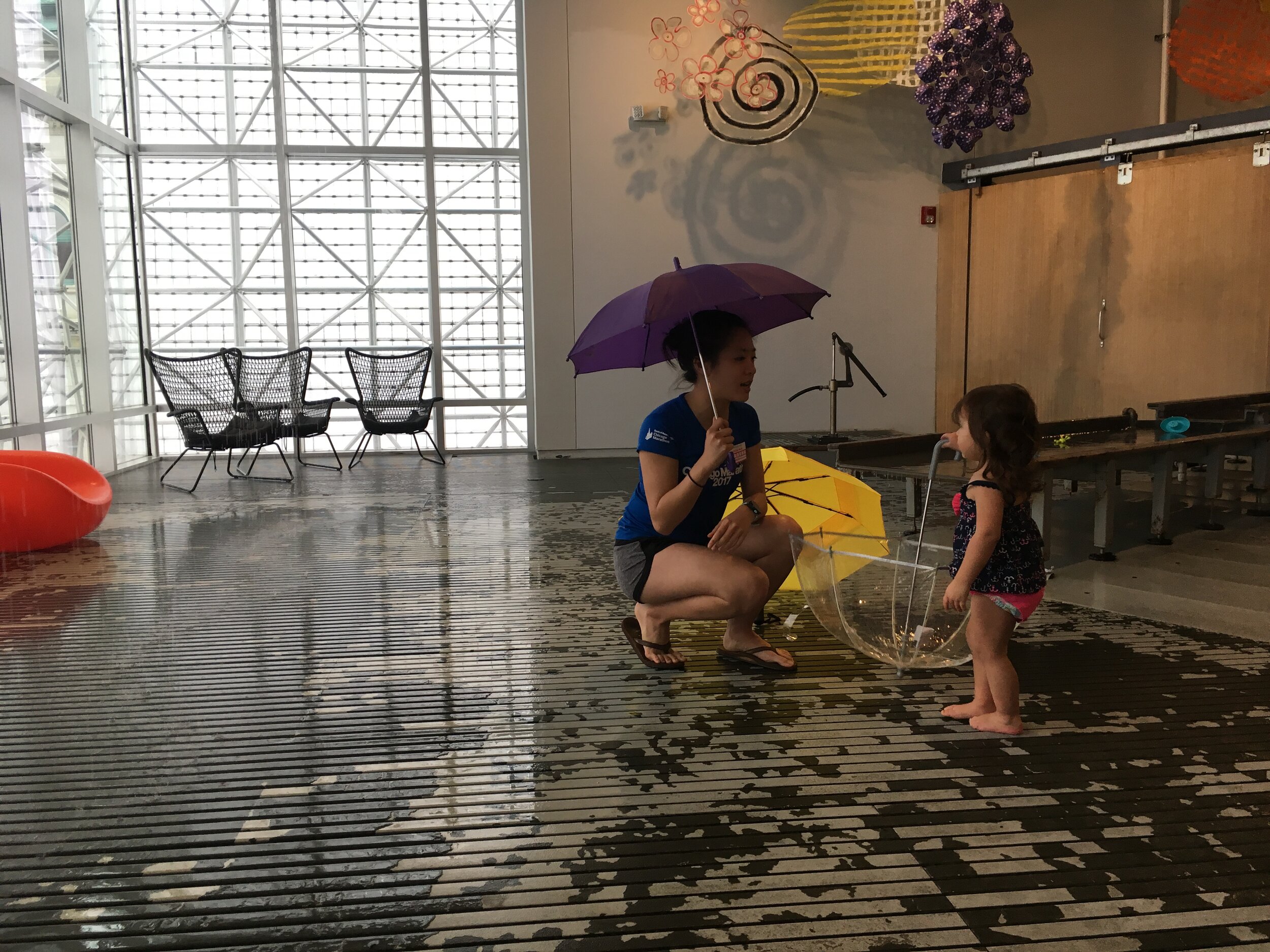
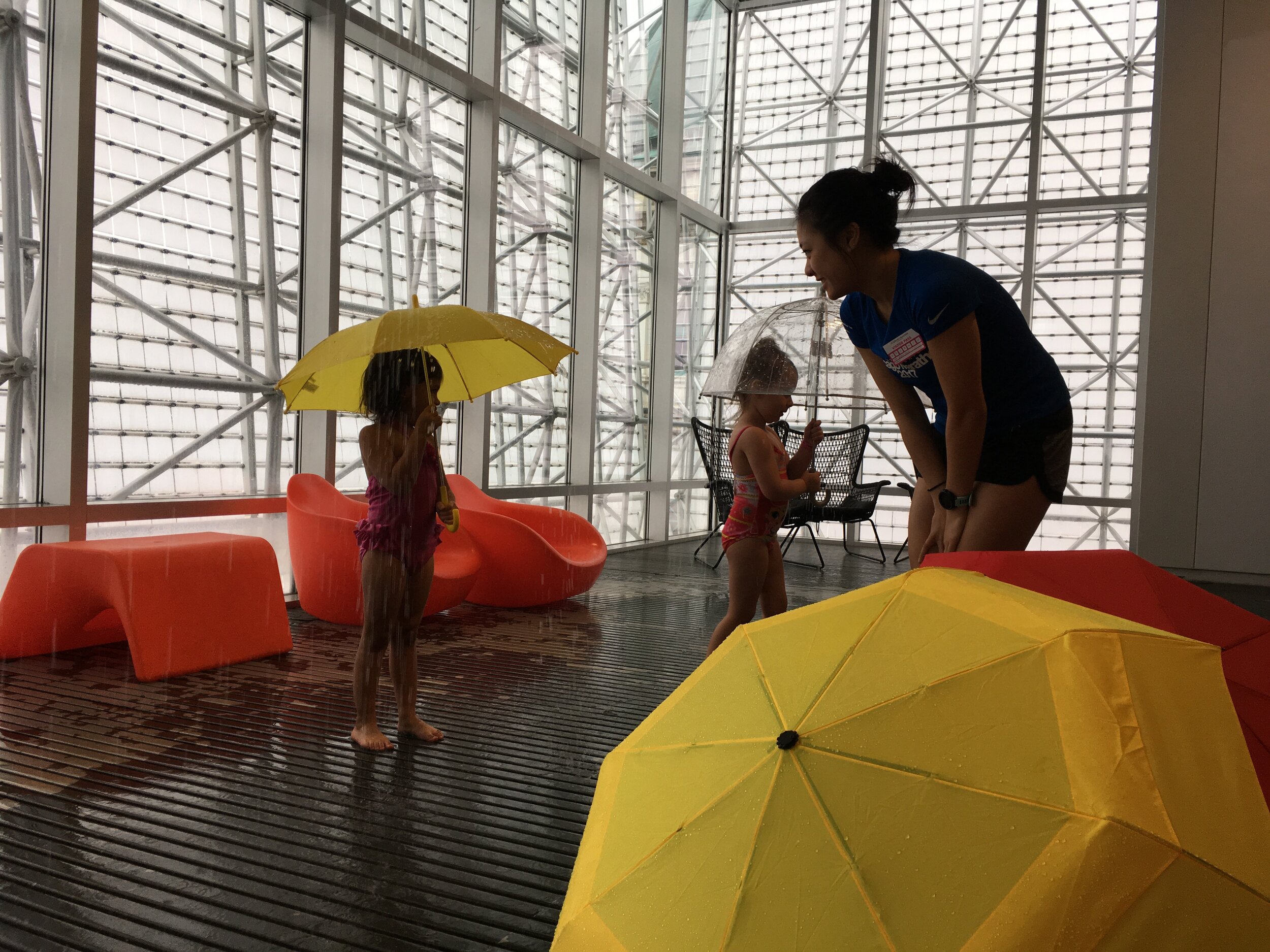
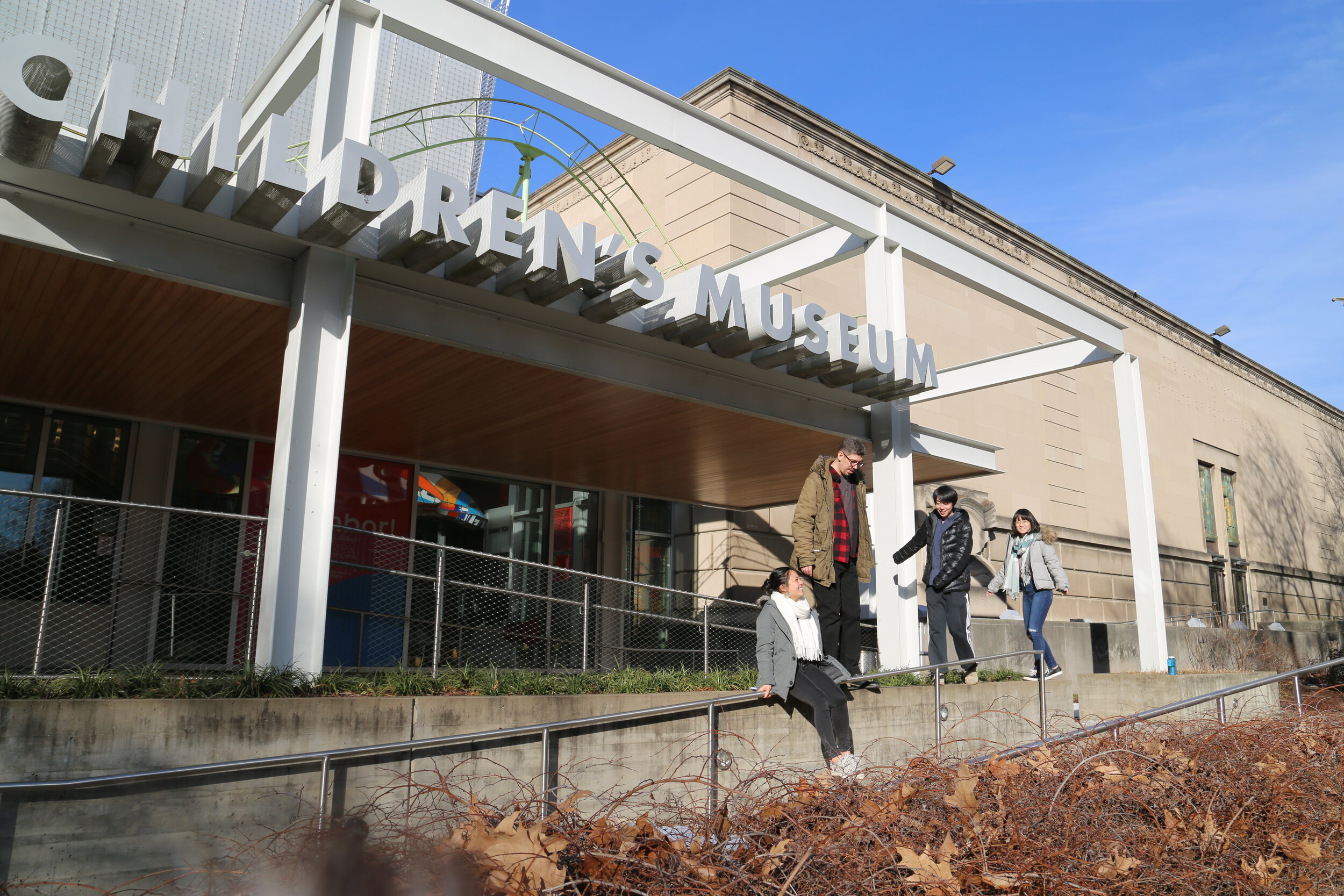

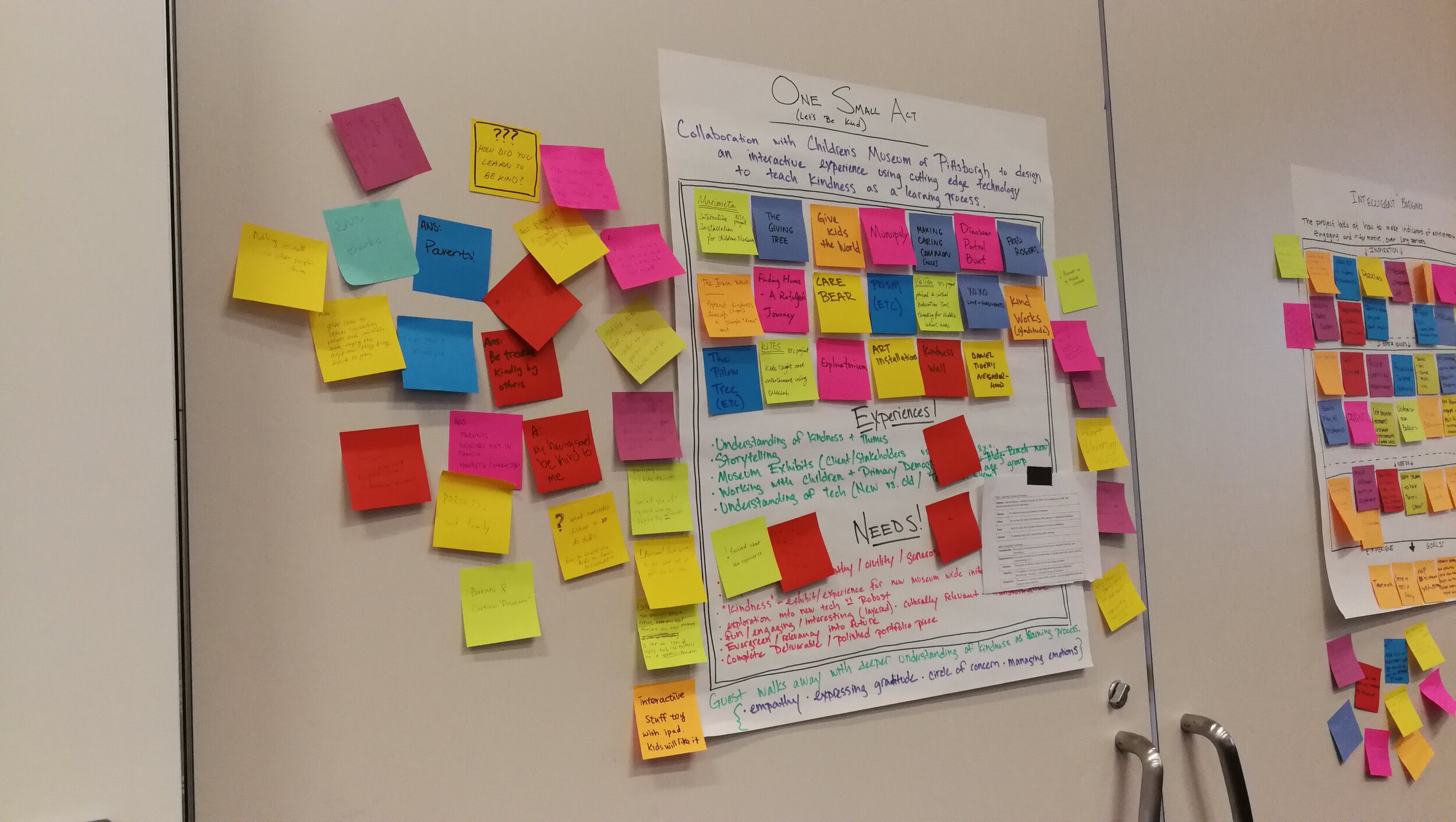
Solutions
Assigning “homework” before meetings.
Some teammates were not comfortable having open brainstorming sessions as they did not like to share incomplete ideas. Having all teammates brainstorm individually and then share their ideas increased participation during meetings. As well, to increase participation during weekly advisors meetings, we assigned each teammate an update to discuss.
Using shared vocabulary.
We realized that a lot of the miscommunication among our teammates came from us using American metaphors or analogies that didn’t translate. We tried to be cognizant of using common terms and to stop each other to clarify if necessary.
Using VR technology to rapid prototype.
Since we would not be installing in the museum and we did not know the final specs on the space, we decided to focus on the user experience and narrative design. Instead of fabricating the installation, we used the HTC Vive and trackers to create a prototype that simulated our experience. We used this set-up to rapid prototype.
Simulating “cutting-edge.”
The final deliverable used an Arduino with a rotary encoder to determine the location of the umbrella. This did the same thing as the HTC Vive, but for a much cheaper price and with much more robust technology.
Adding in natural breaks.
To make sure that children would share, we added in a clear reset point to the experience. When the sun comes out, all the characters leave the scene and a rainbow comes out. The rainbow also serves as a timer to indicate when the rain and characters will appear again. This mechanic provided a natural stopping point for children.
Playtesting!
At the end of the day, our design choices were supported by evidence from playtesting. When faculty disagreed with our choices, we made sure to present data that supported our decisions.

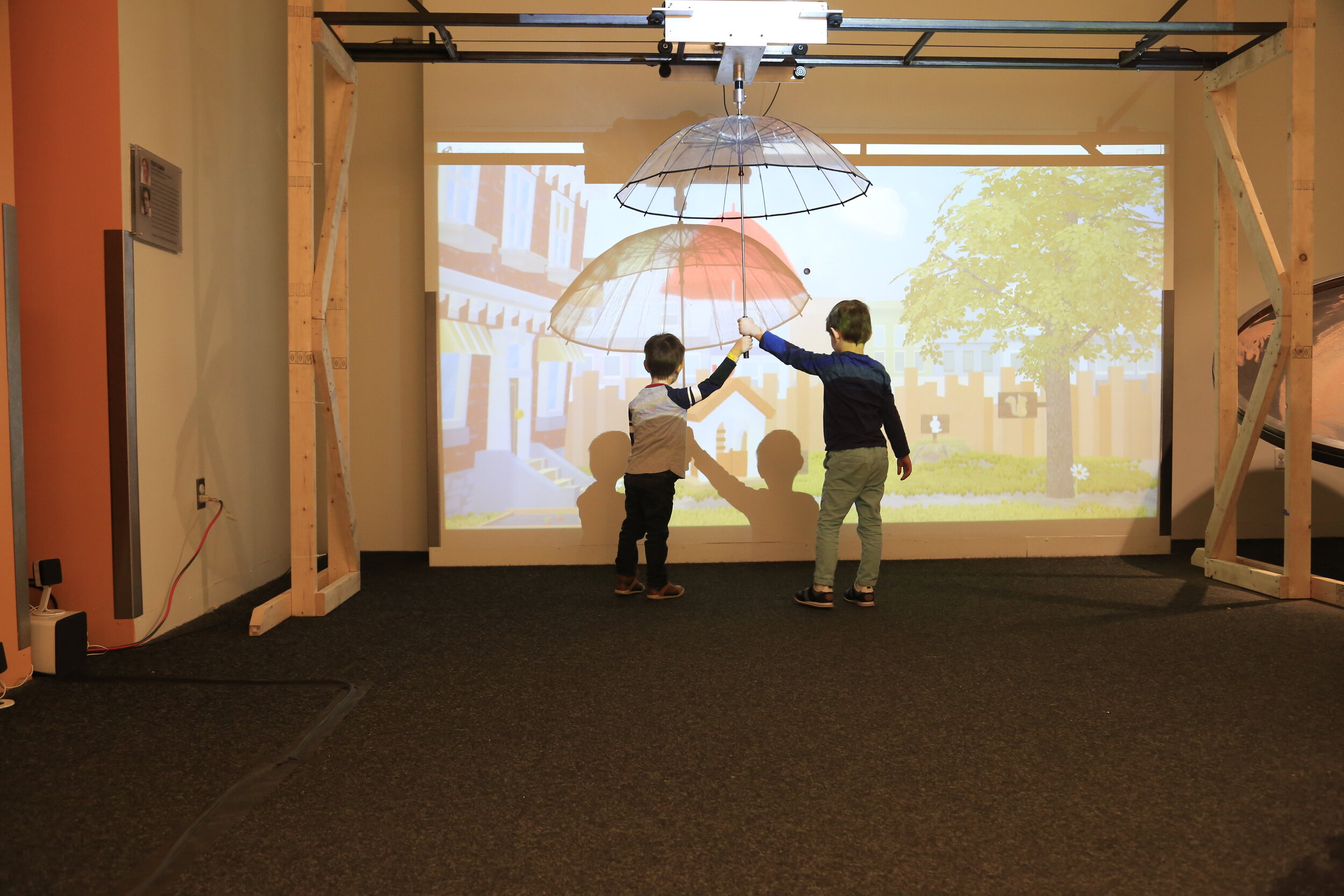
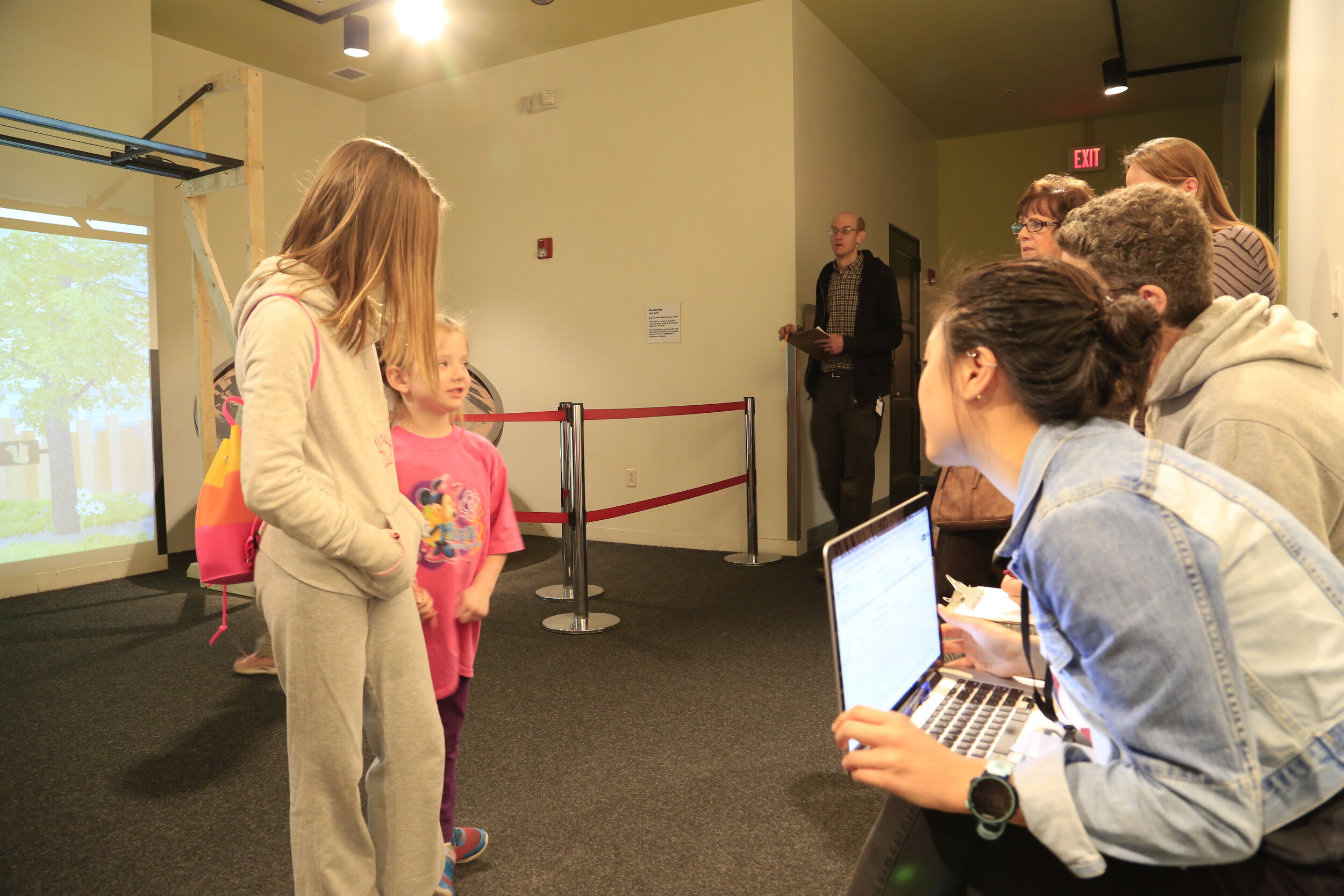

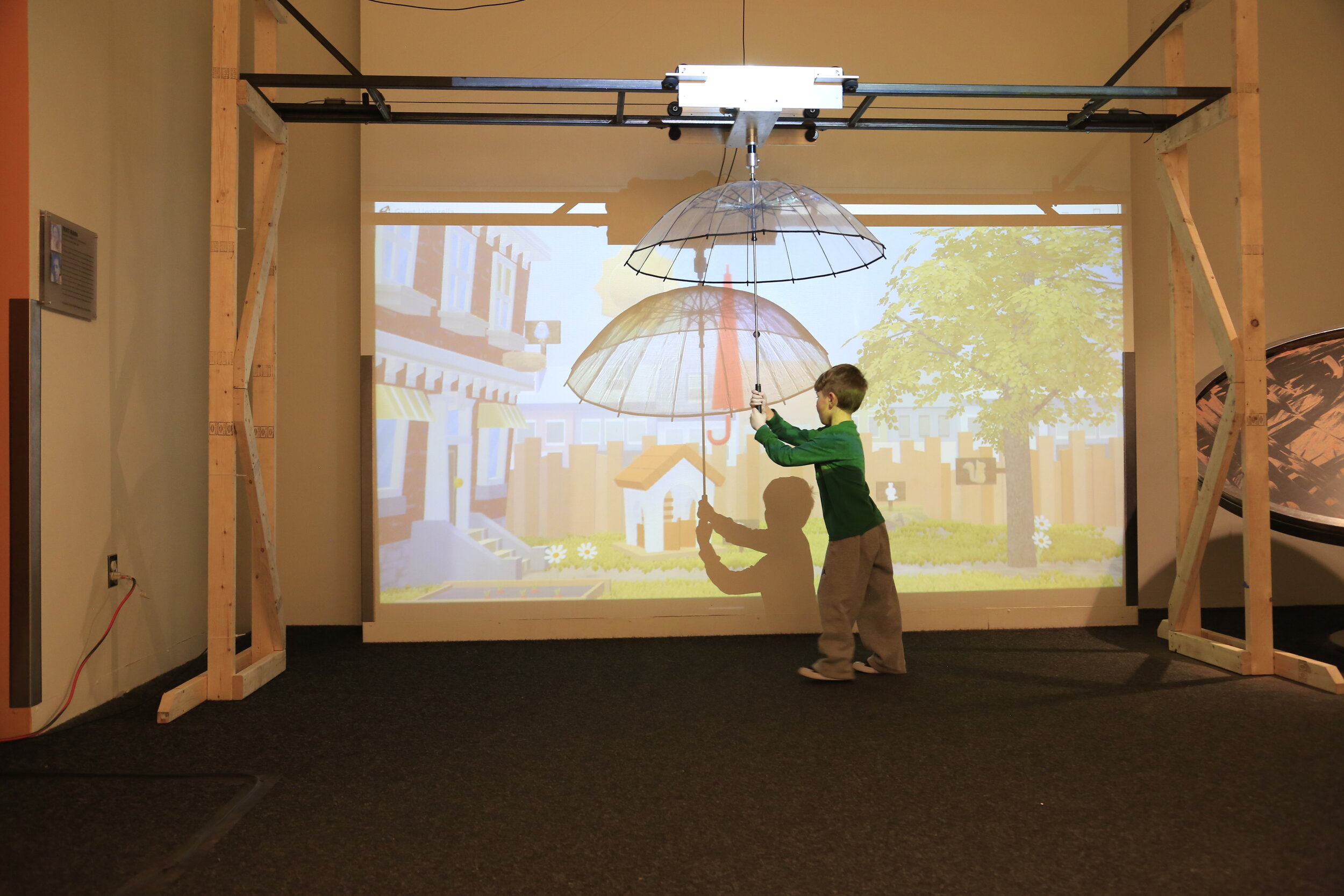
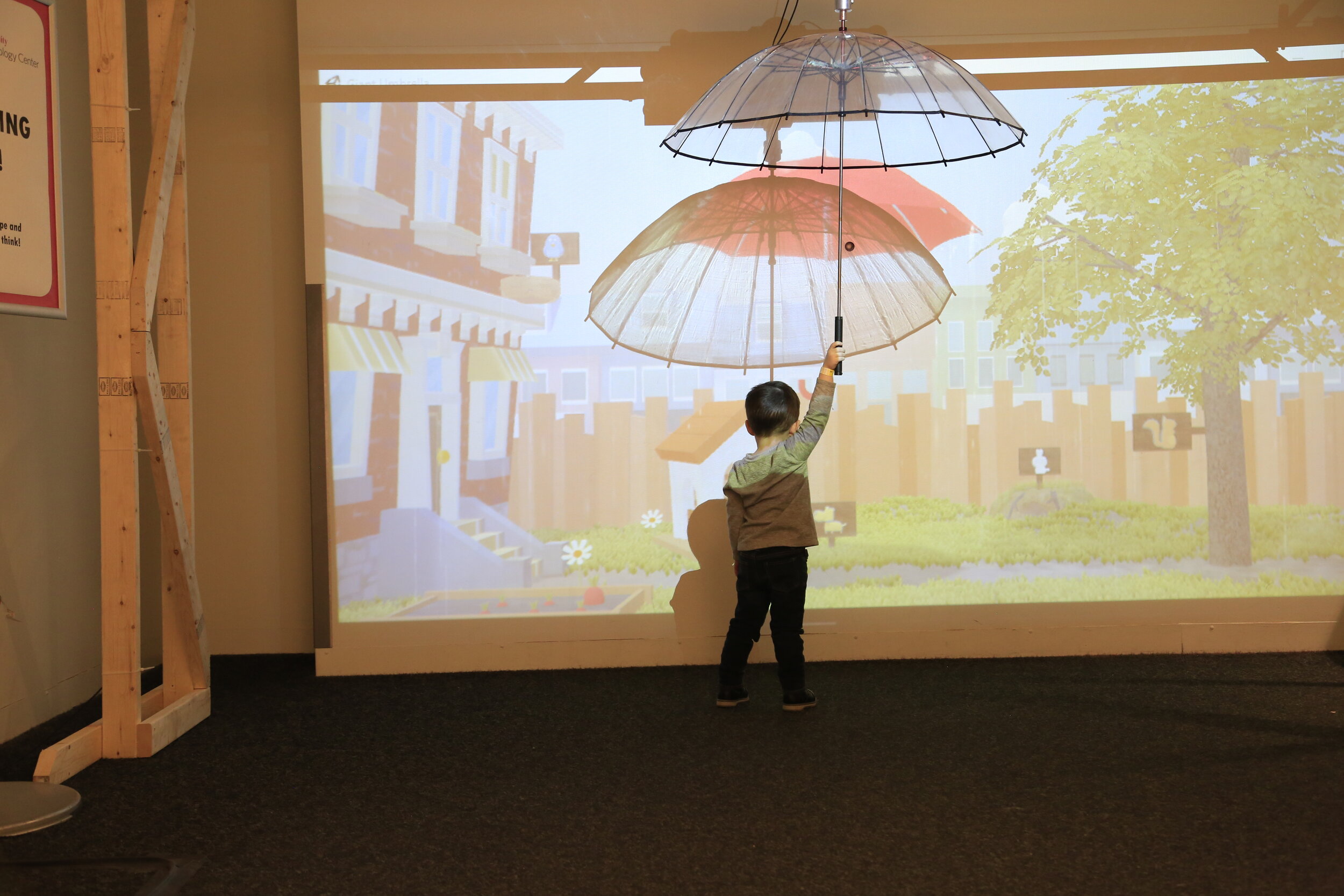

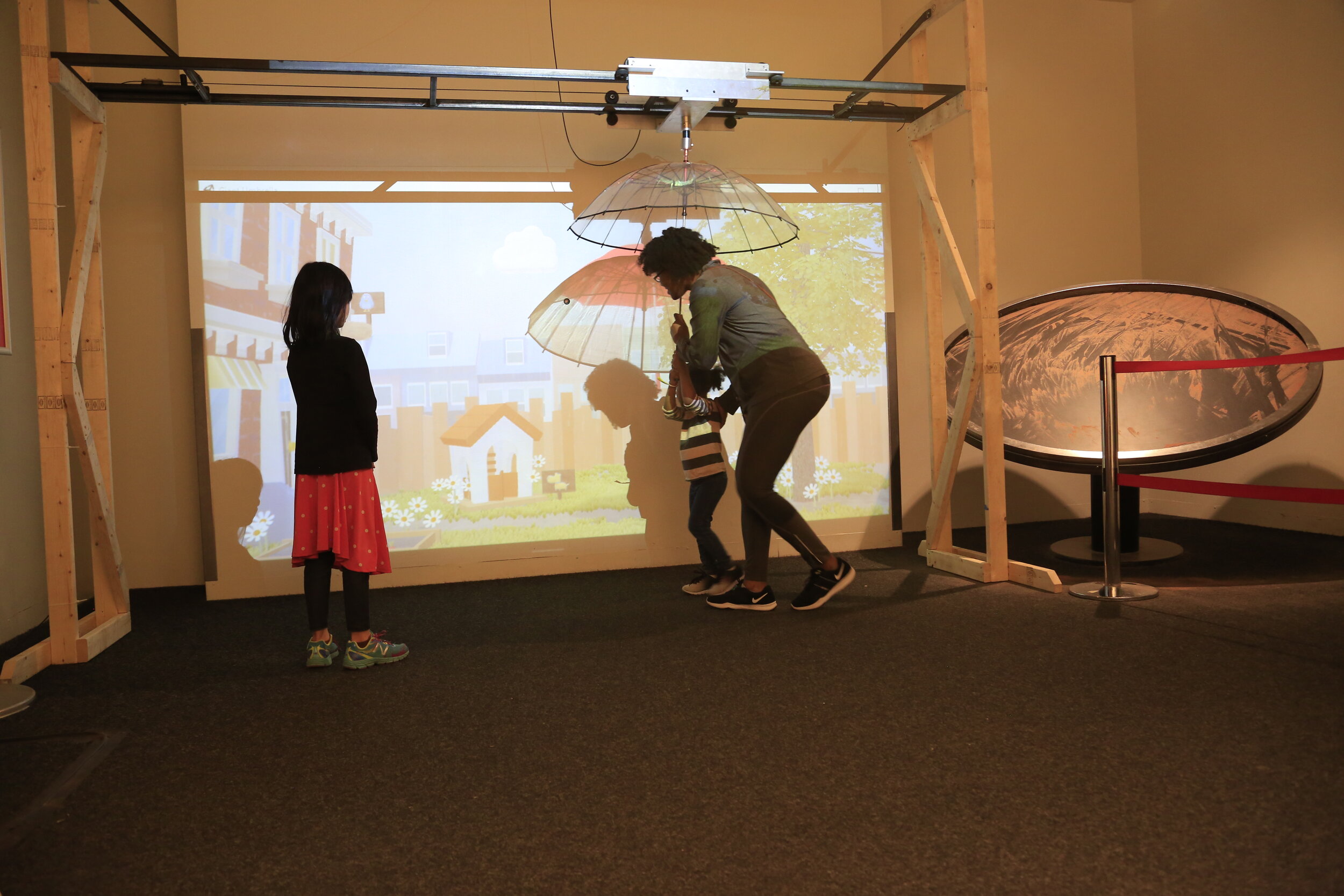
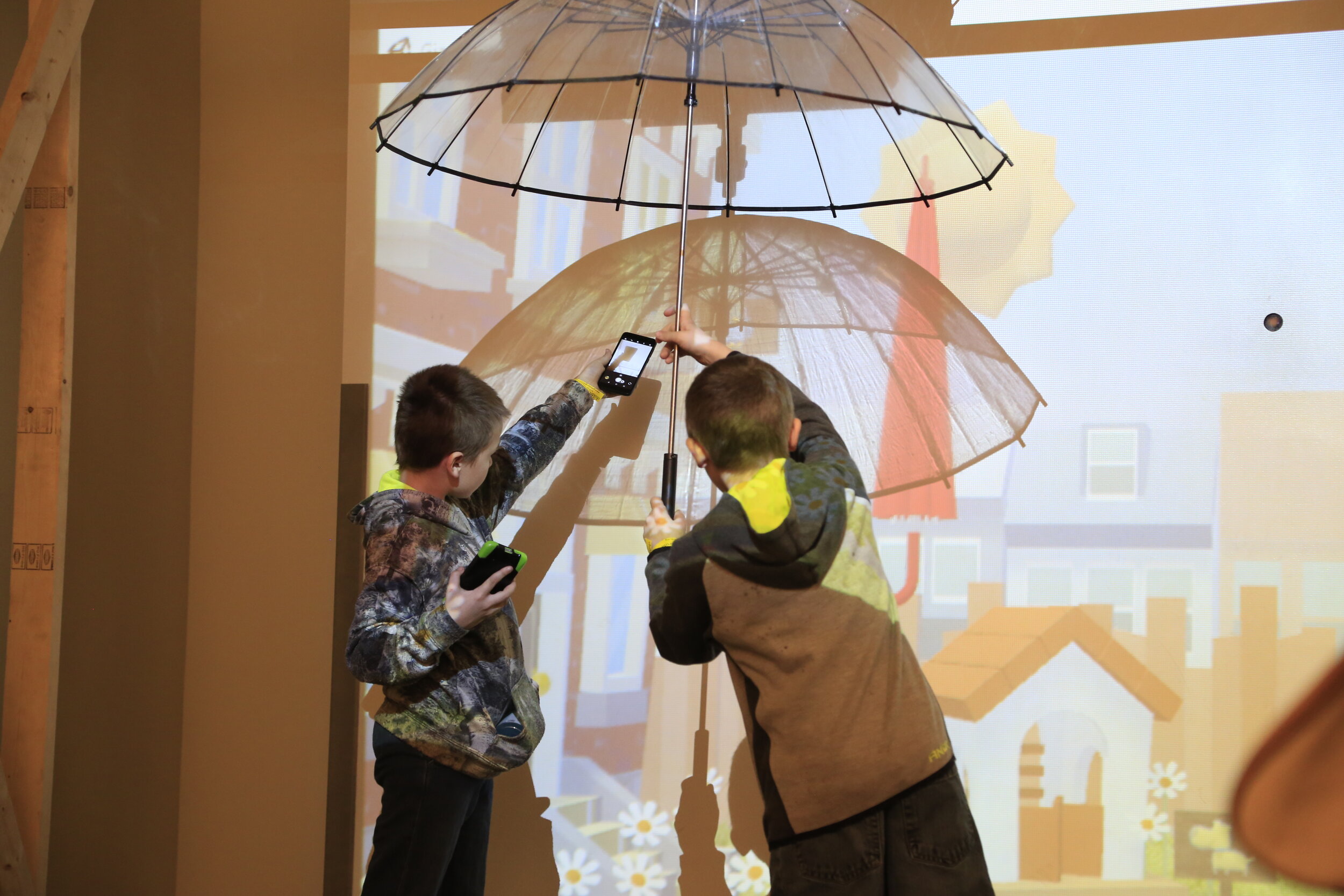

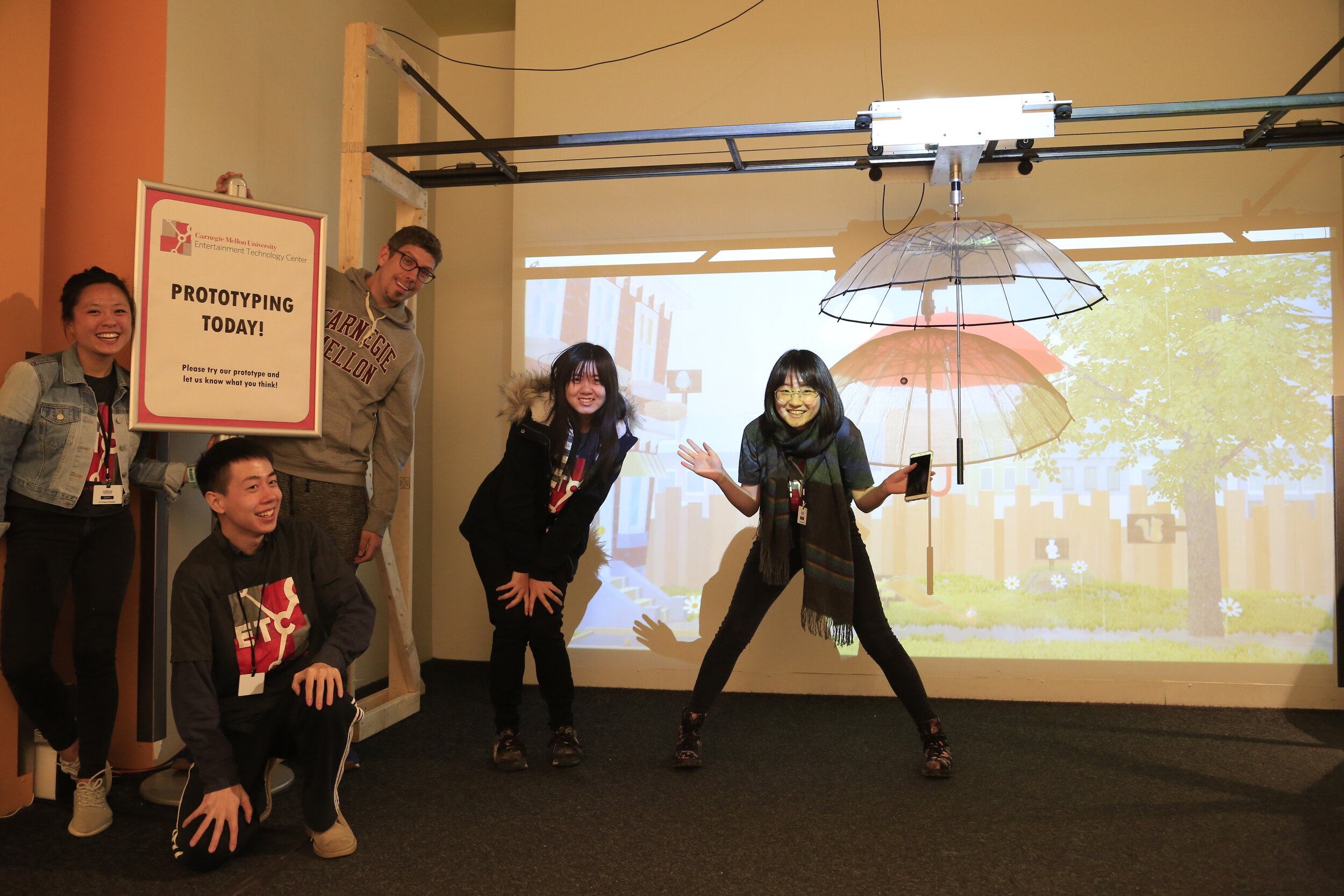
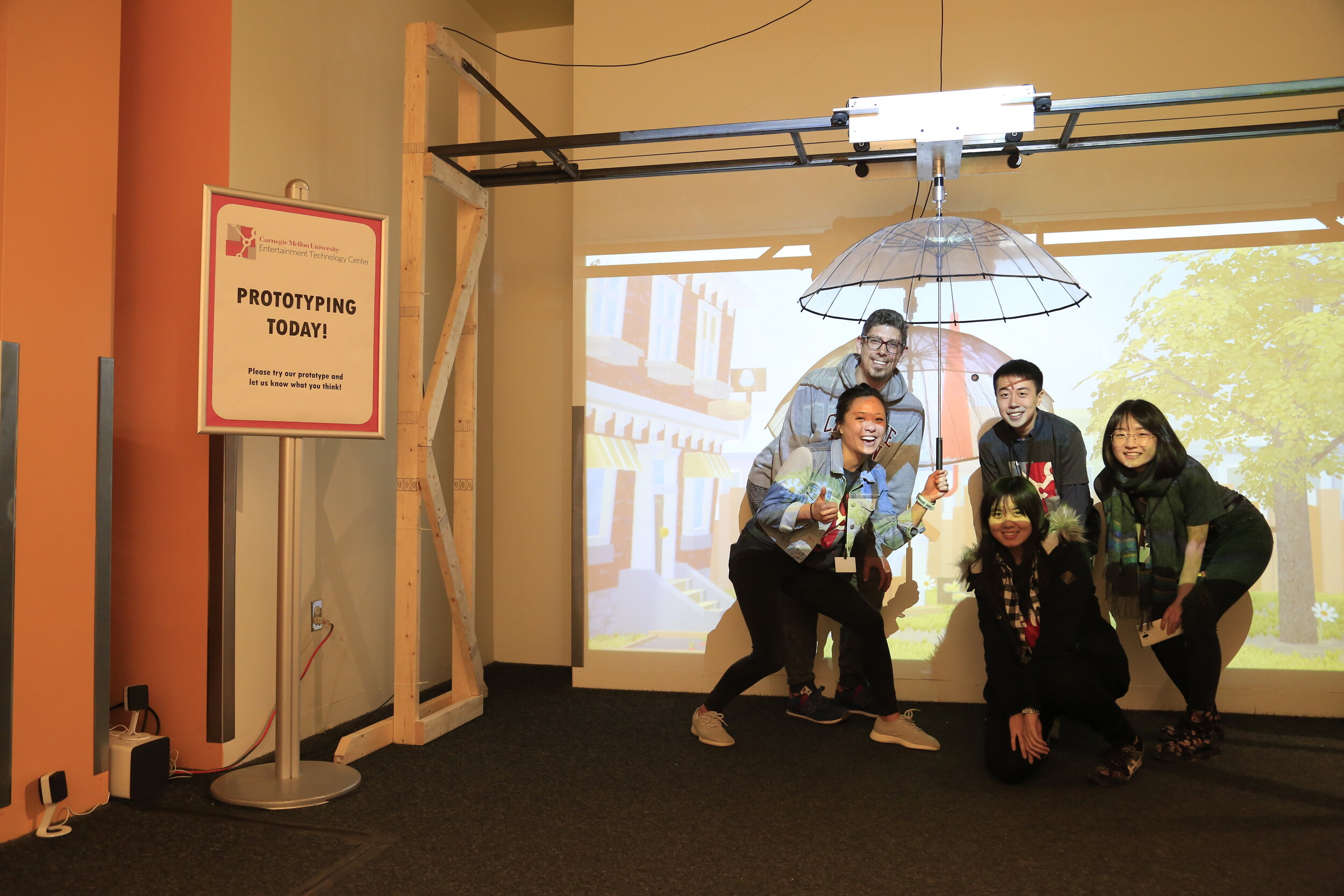
My Learnings:
Working with teammates from different cultural backgrounds.
People can have very different work styles; learning how to best accommodate everyone is essential to a well-functioning team. An important aspect of this was learning how to distinguish impact vs. intent.
The simplest solutions are the best solutions.
We chose the simplest idea to execute, which allowed us to iterate on our concept nine times in 15 weeks. As well, by choosing a simple piece of technology, we were able to focus on developing the narrative which was integral to executing the concept of “practicing kindness.”
Designing for a museum.
Working closely with learning research scientists and exhibit designers, provided me with the opportunity to learn how to design for robustness, throughput, and context. For example, thinking about noise pollution affecting your sound design, creating intuitive experiences that don’t require text, and also designing for child-caregiver interactions.
